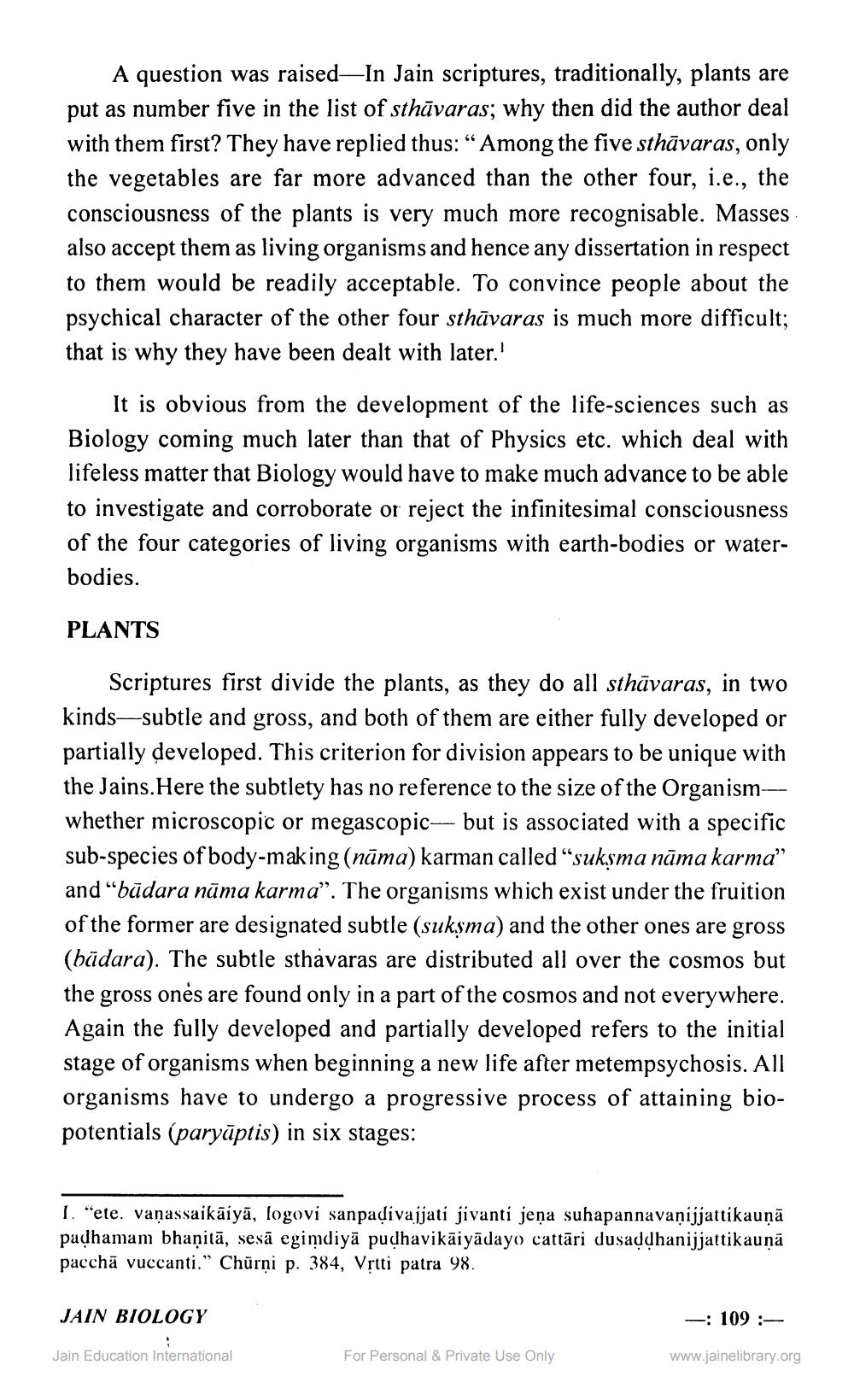________________
A question was raised—In Jain scriptures, traditionally, plants are put as number five in the list of sthāvaras; why then did the author deal with them first? They have replied thus: “Among the five sthāvaras, only the vegetables are far more advanced than the other four, i.e., the consciousness of the plants is very much more recognisable. Masses also accept them as living organisms and hence any dissertation in respect to them would be readily acceptable. To convince people about the psychical character of the other four sthāvaras is much more difficult; that is why they have been dealt with later.'
It is obvious from the development of the life-sciences such as Biology coming much later than that of Physics etc. which deal with lifeless matter that Biology would have to make much advance to be able to investigate and corroborate or reject the infinitesimal consciousness of the four categories of living organisms with earth-bodies or waterbodies.
PLANTS
Scriptures first divide the plants, as they do all sthāvaras, in two kinds—subtle and gross, and both of them are either fully developed or partially developed. This criterion for division appears to be unique with the Jains.Here the subtlety has no reference to the size of the Organism--- whether microscopic or megascopic-- but is associated with a specific sub-species of body-making (nāma) karman called “suksma nāma karma” and“būdara nūma karma”. The organisms which exist under the fruition of the former are designated subtle (sukṣma) and the other ones are gross (bādara). The subtle sthavaras are distributed all over the cosmos but the gross onės are found only in a part of the cosmos and not everywhere. Again the fully developed and partially developed refers to the initial stage of organisms when beginning a new life after metempsychosis. All organisms have to undergo a progressive process of attaining biopotentials (paryāptis) in six stages:
1. "ete. vanassaikāiyā, logovi sanpadivajjati jivanti jena suhapannavanijjattikauņā padhamam bhaņitā, sesā egimdiyā pudhavikāiyādayo cattāri dusaddhanijjattikauņā pacchā vuccanti." Chürni p. 384, Vrtti patra 98.
JAIN BIOLOGY
—: 109 :
Jain Education International
For Personal & Private Use Only
www.jainelibrary.org




